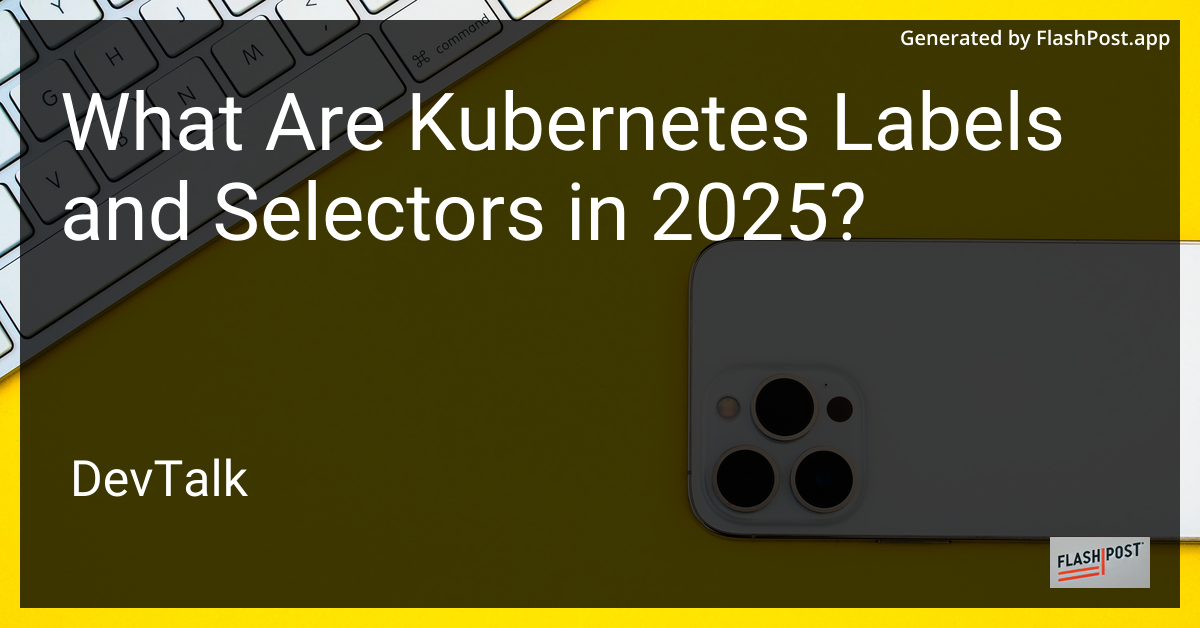What Are Kubernetes Labels and Selectors in 2025?

Understanding Kubernetes Labels and Selectors in 2025
In the ever-evolving landscape of cloud-native computing, Kubernetes has solidified its role as a powerhouse in container orchestration.
Among its key components, Kubernetes labels and selectors play a crucial role in managing and organizing resources. This article delves into what these terms mean in 2025 and how they continue to simplify the management of Kubernetes resources.
What Are Kubernetes Labels?
Kubernetes labels are key-value pairs attached to objects such as pods, nodes, and services. They provide meaningful and context-rich metadata that helps in categorizing and managing Kubernetes resources. Whether you're deploying applications, managing resources, or orchestrating complex environments, labels are essential.
Example of Labels
Here's a basic example of how labels work in a Kubernetes deployment:
apiVersion: apps/v1
kind: Deployment
metadata:
name: my-deployment
labels:
app: myapp
environment: production
In this example, the deployment my-deployment is labeled with app: myapp and environment: production. These labels can be instrumental for organizing resources in a meaningful way.
What Are Kubernetes Selectors?
Selectors are the tools that allow Kubernetes to query and retrieve sets of resources based on their labels. In 2025, Kubernetes provides powerful mechanisms to select resources using selectors, enabling automation and efficiency in managing deployments.
Types of Selectors
-
Equality-Based Selectors: These selectors match labels with specific key-value pairs. For instance,
app=myappselects all resources labeled withapp: myapp. -
Set-Based Selectors: These selectors match keys against a set of values. For example,
environment in (production, staging)would select resources withenvironmentlabels containing eitherproductionorstaging.
Example of Selectors
apiVersion: v1
kind: Service
metadata:
name: my-service
spec:
selector:
app: myapp
In this YAML, my-service selects and targets pods labeled with app: myapp, effectively associating the service with the corresponding pods.
The Role of Labels and Selectors in 2025
In 2025, the complexity of distributed systems has only increased, and Kubernetes labels and selectors have become even more vital. With the growing popularity of microservices, managing node affinity, deploying hybrid cloud strategies, or setting up automated CI/CD pipelines becomes more efficient with robust labeling practices.
Consider pairing these practices with advanced Kubernetes tooling and tutorials:
- Drive sophisticated application deployments with a Kubernetes Helm Chart Tutorial.
- Seamless integration of Jenkins CI/CD with Kubernetes empowers DevOps teams to optimize their workflows.
- Ensure secure communications across your Kubernetes clusters by adding an SSL Certificate.
Conclusion
On the cutting edge of cloud-native solutions, Kubernetes labels and selectors remain indispensable for managing and orchestrating resources effectively. Their flexibility and power help in navigating the complexities of modern app deployment strategies in 2025. Leverage these features to enhance your Kubernetes systems and maintain a competitive edge in the tech landscape.
For related insights, explore how you can enhance your DevOps practices and secure your Kubernetes environments with these useful resources: